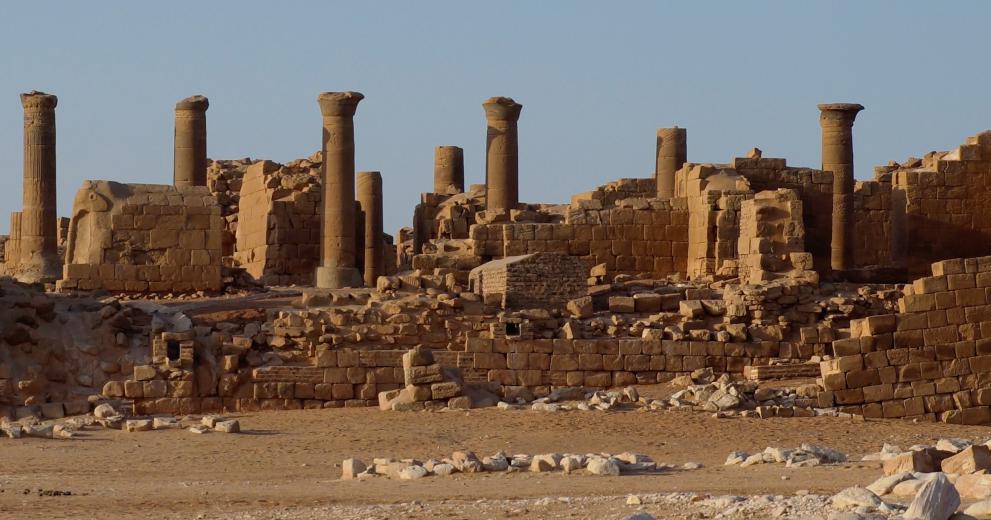
Dating back to the Meroitic period (circa 300 BC to 350 AD), Musawwarat es-Sufra served as a prominent religious and pilgrimage center. The site’s name translates to “the place of pictures” in Arabic, a fitting description given its intricate carvings and hieroglyphic inscriptions that adorn the structures.
One of the most striking features of Musawwarat es-Sufra is the Great Enclosure. This colossal complex, spanning over 45,000 square meters, is surrounded by massive sandstone walls, some as high as ten meters. Within the enclosure, visitors can explore a series of temples, columns, courtyards, and chambers dedicated to various deities.
Mysterious Purpose and Unique Artistry
While the exact purpose of Musawwarat es-Sufra remains a subject of debate among archaeologists, it is widely believed to have been a site of religious significance. The temples within the Great Enclosure are dedicated to a pantheon of gods, including Apedemak, a lion-headed deity revered by the Kingdom of Kush.
What sets Musawwarat es-Sufra apart is its remarkable artistry. Intricate carvings depict a range of scenes, from religious rituals to daily life in ancient Sudan. Among the most famous are the life-sized depictions of elephants and rhinoceroses, animals that once roamed the region. These carvings provide invaluable insights into the fauna of the time.
Ongoing Discoveries and Preservation Efforts
Recent excavations and studies have shed new light on Musawwarat es-Sufra. Researchers have uncovered hidden chambers and conducted extensive restoration work to ensure the site’s preservation for future generations. Sudanese authorities, along with international organizations, have taken steps to protect and promote this cultural treasure.
